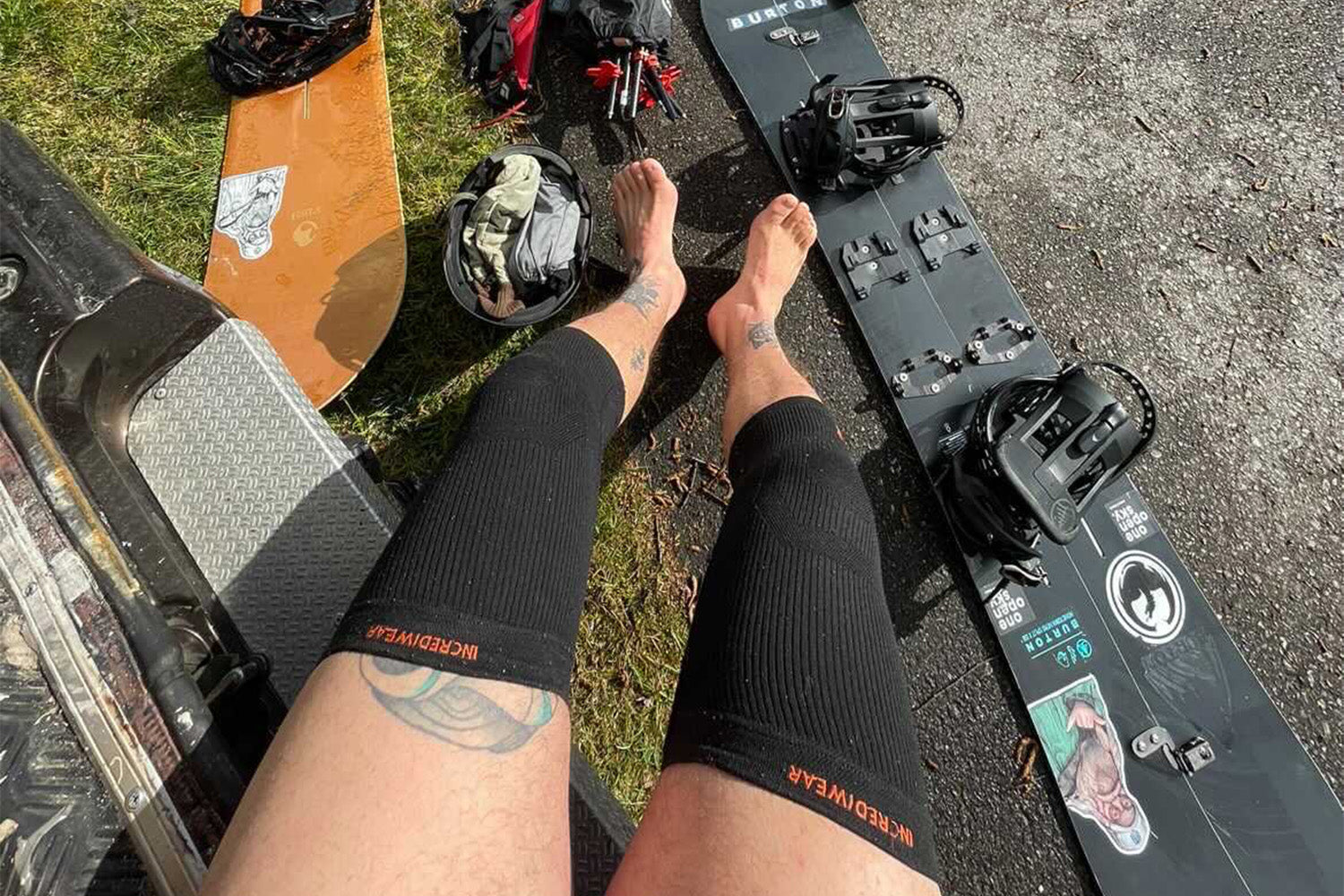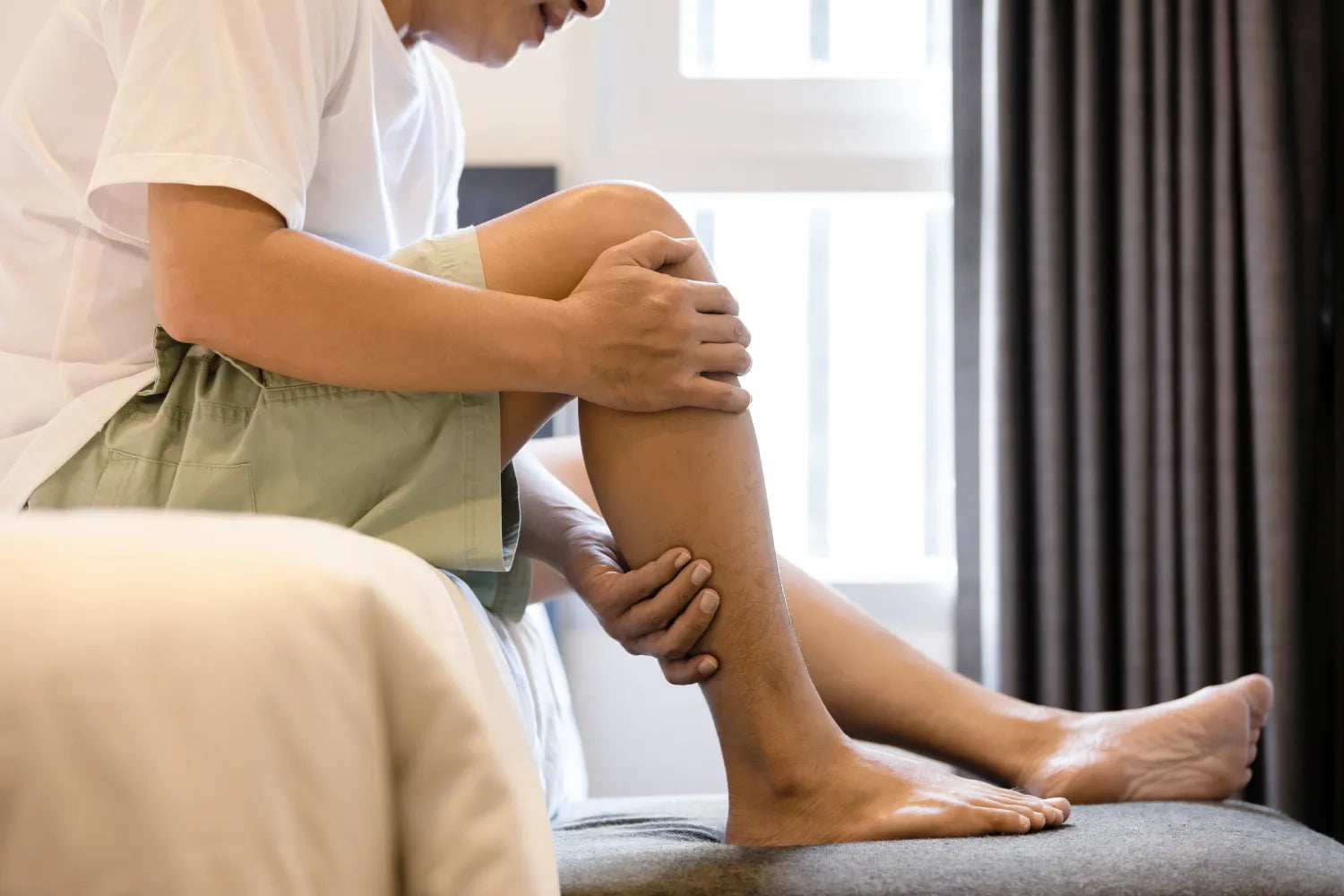Medically Reviewed By | Dr. Kate Panawash, PT, NCS, DPT
Golf, often viewed as a relaxed and low-impact sport, surprisingly leads to a myriad of injuries for both amateurs and pros alike. Despite its moderate pace, golf demands complex, dynamic movements that can lead to injuries when done incorrectly or excessively.
In this article, we will delve into the 10 most common golf injuries, exploring potential causes and presenting effective recovery options. Understanding these injuries can equip you with the knowledge to avoid or manage them better if they occur, keeping you on the fairway and away from the doctor's office.
Let's look at how to maintain your swing and enjoy the game without discomfort.
1. Golfers' Elbow (Medial Epicondylitis)
Golfers' Elbow, or Medial Epicondylitis, is a painful condition predominantly affecting the tendons that connect the forearm to the inside of the elbow. Golfers often develop this due to the repetitive and forceful twisting movements involved in swinging a golf club.
Symptoms typically include pain and tenderness on the inside of the elbow, which may extend into the forearm.
2. Back Pain
Many golfers experience back pain due to the rotational stresses during a golf swing. The drive in golf can place pressure on spinal discs, leading to muscle strains, sprains, or more severe conditions like herniated disks.
3. Shoulder Pain
Shoulder pain in golfers often arises from rotator cuff injuries. The rotator cuff is crucial during a golf swing, coordinating movement and stability. A combination of repeated use and the high-speed rotation of golf swings can strain or tear these muscles, leading to pain and weakness in the shoulder.
4. Wrist Injuries
Given the wrist is a key hinge in the golf swing, it's no surprise wrist injuries are frequent complaints among golfers. From tendonitis (inflammation of the tendons) to sprains, these injuries often result from repetitive golf motions, incorrect grip or swing techniques, or even an ill-fitted club.
5. Knee Pain
The stability and twisting movement required in golf can impart a significant amount of stress on the knees. Ongoing play can lead to conditions such as tendinitis and torn menisci. Additionally, golfers may exacerbate pre-existing knee conditions, leading to increased pain and a problematic swing.
6. Hip Injuries
The hip joint plays an essential role in generating power and control in a golf swing. This action, which puts a lot of rotational force on the hips, can result in various injuries, ranging from strains to arthritis for those with pre-existing hip conditions.
7. Tennis Elbow (Lateral Epicondylitis)
Strangely enough, "Tennis Elbow" isn't exclusive to tennis players, and it's quite common in golfers, too. This condition, affecting tendons on the outer elbow, occurs due to repetitive swinging motions. Golfers can present with pain and tenderness on the outside of the elbow, often extending to the forearm and wrist.
8. Hand and Finger Injuries
Golfers can develop hand and finger injuries due to repeated impact between the golf club and the ball. The most prevalent injuries include tendinitis, ligament injuries, and fractures. These injuries often result from excessive practice, poor technique, or not warming up properly.
9. Ankle Injuries
Navigating around the golf course can put golfers at risk of ankle injuries, especially on uneven terrain or when using a golf cart. Sprains are common and occur when the foot unintentionally twists or rolls, stretching or tearing the ankle's ligaments. These injuries can cause swelling, pain, and limited joint movement.
10. Sunburn and Heat Stroke
Not strictly an injury, sunburns and heat strokes are still common health risks for golfers. Spending hours in the open exposes golfers to the sun's harmful UV rays, potentially causing sunburns. On the other hand, heat stroke is due to the body overheating in a hot and humid environment, leading to dehydration and exhaustion.
Recovery Options for Common Golf Injuries
Recovery from golf injuries requires a balanced approach, combining rest, appropriate exercises, and the use of supportive wear to aid the healing process.
Here are some recovery options to consider:
- Rest and Ice: For acute injuries like sprains or strains, rest and ice can reduce swelling and pain.
- Physical Therapy: A customized physical therapy program can help rehabilitate injuries and improve range of motion.
Dr. Katelyn Panawash, Doctor of Physical Therapy (DPT) and Board Certified Neurologic Clinical Specialist (NCS), emphasizes how working with a professional can expedite healing and improve functional outcomes. They may suggest targeted exercises or helpful lifestyle adjustments to help relieve tension from the affected area.
- Incrediwear Elbow Sleeves: Ideal for golfers' elbow, our Elbow Sleeves use semiconductor fabric technology to support blood flow, soothe discomfort, and maintain recovery.
- Stretching: Regular stretching can alleviate muscle tightness and maintain flexibility, which is particularly important for back and hip injuries.
- Strength Training: Incorporating specific strength exercises can rebuild weakened areas and prevent future injuries.
- Incrediwear Knee Sleeves: For knee pain and injuries, our Knee Sleeve offers support through healthy circulation.
- Proper Technique: Adjusting your golf swing with professional guidance can prevent re-injury and reduce strain on affected areas.
- Incrediwear Ankle Sleeves: Our Ankle Sleeve can provide essential support for ankle sprains, soothing discomfort and supporting recovery.
- Hydration and Nutrition: Proper hydration and a balanced diet aid in overall recovery and can help prevent heatstroke.
- Sun Protection: Using sunscreen and wearing protective clothing can prevent sunburn, a common issue for golfers.
A Final Word
In golf, as in any sport, prevention and recovery are as crucial as the game itself. This guide has highlighted the most common golf injuries, offering insights into their causes and effective recovery strategies. By understanding these injuries and implementing proactive measures, golfers can significantly reduce their risk and ensure they enjoy the game for many years to come.
At Incrediwear, we believe in a holistic approach to sports wellness. It's not just about playing the game — it's about embracing a lifestyle that prioritizes your health and well-being, both on and off the course. From adopting proper techniques and incorporating regular exercises to utilizing innovative recovery aids, every aspect plays a vital role.
Remember, your best game lies ahead, and with the right approach to injury prevention and recovery, you'll be well-equipped to reach your full potential in golf. Keep swinging, keep recovering, and most importantly, keep enjoying the game you love.
Sources:
Common Golf Injuries - Techniques and Prevention | UPMC
Heat Stress Related Illness | NIOSH | CDC
RICE (rest, ice, compression, and elevation) | UK Healthcare
Read more

Medically Reviewed By | Dr. Kate Panawash, PT, NCS, DPT Your knees are involved in most of the movements you make daily. Needless to say, they can take a lot of daily wear and tear, and for those w...

Medically Reviewed By | Dr. Kate Panawash, PT, NCS, DPT Calf health is crucial, not just for athletes but for anyone engaged in daily physical activities. The calf muscles are pivotal in walking, r...






Leave a comment
All comments are moderated before being published.
This site is protected by hCaptcha and the hCaptcha Privacy Policy and Terms of Service apply.